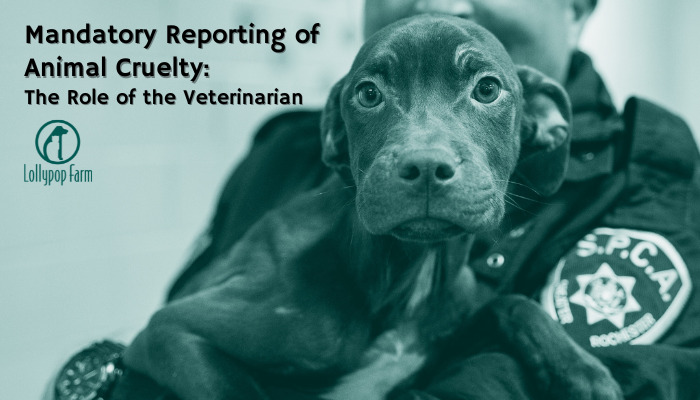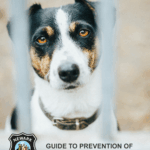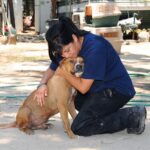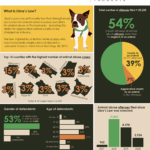Animal cruelty is an insidious issue that permeates various facets of society. Across the spectrum of professionals, from veterinarians to educators, the question arises: is reporting observed instances of animal cruelty a mandatory obligation? This inquiry not only engages the legal frameworks in place but also challenges ethical responsibilities that transcend mere compliance. Do the obligations to report such acts extend beyond the realm of animal healthcare to include teachers and other professionals? Let us explore this pressing topic and dissect its nuances.
At its core, the legal stipulations regarding animals and their treatment can vary significantly from one jurisdiction to another. In many regions, veterinarians are considered mandated reporters—a status that obligates them to report any reasonable suspicion of animal abuse or neglect. This legal mandate often derives from broader animal welfare statutes aimed at protecting vulnerable beings unable to advocate for themselves. However, what is particularly intriguing is the question of whether this duty should harmonize with the responsibilities of other professionals, such as teachers or social workers.
Consider the scenario of a veterinarian who examines an animal with clear signs of abuse or neglect. The veterinarian’s legal obligation is well-defined; failure to report can result in legal repercussions. But what if a teacher notices a child conversing about witnessing animal cruelty? Should that professional also feel compelled to speak up? In many regions, educators are encouraged to report any suspected abuse, for the welfare of children, and the shadows of such trauma may extend to the innocent creatures they adore.
The standards for mandatory reporting predominantly derive from the premise that certain professionals, due to their roles, may encounter instances of maltreatment more frequently than the average citizen. Veterinarians, often privy to the intimate details of pet ownership, are uniquely positioned to identify physical signs of abuse. But the ethical obligation of reporting cruelty should not solely be confined to the realm of veterinarians. Rather, it stands as a call to action for all professionals involved in the lives of children and families, emphasizing interdependence in safeguarding both animal and human welfare.
This raises another compelling question: Is the lack of explicit laws governing the reporting of animal cruelty by non-veterinarian professionals an oversight, or does it reflect a deeper societal ambivalence towards the protection of animals? While many laws dictate the duties associated with child welfare, historical underpinnings often prioritize human interests over those of animals. Such paradigms require re-examination. Shouldn’t the welfare of animals deserve equal attention? As society progresses, an evolving perspective that transcends anthropocentrism may usher in a commitment to broader reporting requirements, ensuring that professionals at all levels can act decisively.
Integration of educational programs involving animal welfare ethics into curricula for teachers, healthcare providers, and others could foster a more vigilant approach towards recognizing animal cruelty. Precursory workshops would prepare professionals to discern and interpret signs of abuse. Furthermore, it is essential to cultivate a culture of reporting. Professionals should understand that vigilance against animal cruelty not only promotes better animal welfare but can also catalyze healing and support for at-risk families.
Critics might argue that expanding mandatory reporting laws to encompass a wider array of professions places undue burden on them. It is vital to clarify that the objective is not to overload professionals with responsibilities, but rather to equip them with the necessary tools to ascertain whether potential abuse warrants further investigation. The challenge lies not solely in creating laws but also in building an interconnected network of vigilance and empathy that bridges species barriers.
Responses to such systemic challenges must be fortified by collaboration among animal welfare organizations, legal experts, and educators. Awareness campaigns could illuminate the interlinked fates of children and animals, ensuring that all involved professionals recognize their roles in fostering a compassionate society. The idea of animals as our allies rather than mere commodities should be embraced; their well-being is emblematic of our own moral integrity.
In conclusion, while veterinarians are undeniably in a pivotal position to report instances of animal cruelty due to their specialized role, the responsibility should extend across various professional realms. A multifaceted approach hinges upon legal obligations, ethical imperatives, and a societal framework that values the lives of all beings. Embracing such interconnectedness not only enhances animal welfare but also enriches our understanding of compassion as a fundamental societal value. Ultimately, the question remains open-ended: Is animal cruelty a mandatory report for all involved in the welfare of children and animals alike? Perhaps it is time to ponder not just what the law demands but what moral duty implores.








